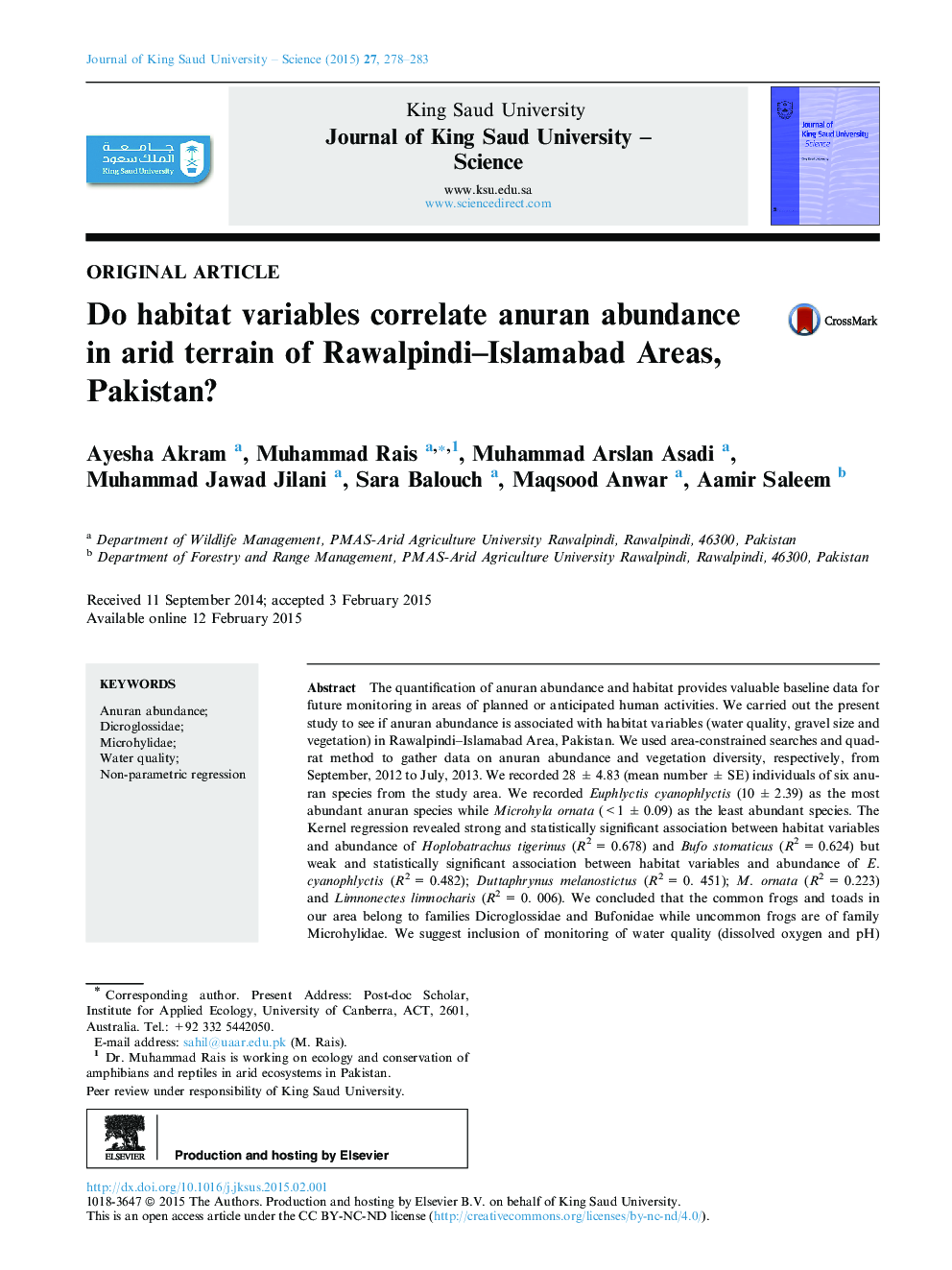| کد مقاله | کد نشریه | سال انتشار | مقاله انگلیسی | نسخه تمام متن |
|---|---|---|---|---|
| 827317 | 907993 | 2015 | 6 صفحه PDF | دانلود رایگان |
عنوان انگلیسی مقاله ISI
Do habitat variables correlate anuran abundance in arid terrain of Rawalpindi-Islamabad Areas, Pakistan?
ترجمه فارسی عنوان
آیا متغیرهای زیستگاه، فراوانی انار در مناطق خشک ساحلی راولپندی-اسلامآباد، پاکستان را با هم مقایسه می کنند؟
دانلود مقاله + سفارش ترجمه
دانلود مقاله ISI انگلیسی
رایگان برای ایرانیان
موضوعات مرتبط
مهندسی و علوم پایه
شیمی
شیمی (عمومی)
چکیده انگلیسی
The quantification of anuran abundance and habitat provides valuable baseline data for future monitoring in areas of planned or anticipated human activities. We carried out the present study to see if anuran abundance is associated with habitat variables (water quality, gravel size and vegetation) in Rawalpindi-Islamabad Area, Pakistan. We used area-constrained searches and quadrat method to gather data on anuran abundance and vegetation diversity, respectively, from September, 2012 to July, 2013. We recorded 28 ± 4.83 (mean number ± SE) individuals of six anuran species from the study area. We recorded Euphlyctis cyanophlyctis (10 ± 2.39) as the most abundant anuran species while Microhyla ornata (<1 ± 0.09) as the least abundant species. The Kernel regression revealed strong and statistically significant association between habitat variables and abundance of Hoplobatrachus tigerinus (R2 = 0.678) and Bufo stomaticus (R2 = 0.624) but weak and statistically significant association between habitat variables and abundance of E. cyanophlyctis (R2 = 0.482); Duttaphrynus melanostictus (R2 = 0. 451); M. ornata (R2 = 0.223) and Limnonectes limnocharis (R2 = 0. 006). We concluded that the common frogs and toads in our area belong to families Dicroglossidae and Bufonidae while uncommon frogs are of family Microhylidae. We suggest inclusion of monitoring of water quality (dissolved oxygen and pH) and maintenance of native wild vegetation particularly herbs, shrubs and hydrophytes of the area in the on-going and proposed development schemes of Rawalpindi-Islamabad Areas.
ناشر
Database: Elsevier - ScienceDirect (ساینس دایرکت)
Journal: Journal of King Saud University - Science - Volume 27, Issue 3, July 2015, Pages 278-283
Journal: Journal of King Saud University - Science - Volume 27, Issue 3, July 2015, Pages 278-283
نویسندگان
Ayesha Akram, Muhammad Rais, Muhammad Arslan Asadi, Muhammad Jawad Jilani, Sara Balouch, Maqsood Anwar, Aamir Saleem,
